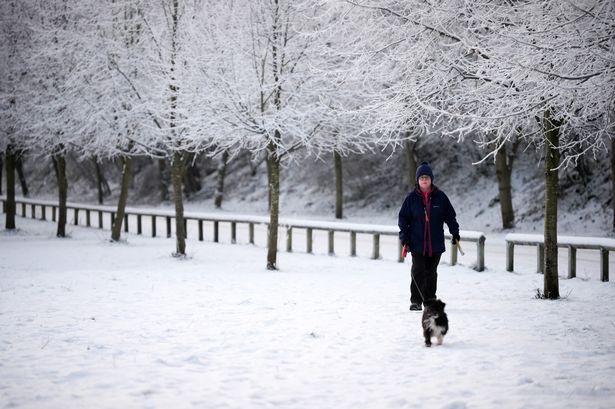The recent Arctic blast that gripped the United Kingdom, blanketing the landscape with snow and plunging temperatures below freezing, has left many Britons reeling from the unexpected onslaught of winter weather. Just as the nation begins to thaw out and recover, weather models are hinting at the possibility of a second blizzard later this month, raising concerns about further disruptions and challenges. This potential second wave of wintry weather underscores the volatile nature of the current climate patterns and prompts a closer examination of the factors contributing to these extreme weather events.
The first blizzard brought significant snowfall to various parts of the UK, causing widespread travel disruptions, school closures, and power outages. The sudden drop in temperatures, coupled with strong winds and icy conditions, created hazardous conditions on roads and pavements, leading to accidents and injuries. The impact on daily life was substantial, with many people struggling to commute to work, access essential services, and maintain their usual routines. The economic consequences of the blizzard are still being assessed, but the disruption to businesses, transportation networks, and supply chains is undoubtedly significant. Beyond the immediate impact, the extreme cold also posed health risks, particularly for vulnerable populations such as the elderly and those with pre-existing medical conditions.
Now, as the country grapples with the aftermath of the first blizzard, the prospect of another such event looms large. Weather maps indicate the potential for a second wave of Arctic air to descend upon the UK later this month, bringing with it the possibility of further heavy snowfall, sub-zero temperatures, and blizzard conditions. The exact trajectory and intensity of this potential second blizzard remain uncertain, as weather forecasting involves inherent complexities and limitations. However, the early indications are sufficient to warrant attention and preparedness. Meteorologists are closely monitoring the developing weather patterns and will continue to refine their forecasts as more data becomes available.
The potential for consecutive blizzards raises important questions about the underlying causes of these extreme weather events. While isolated cold snaps and snowfalls are not uncommon in the UK, the frequency and intensity of such events in recent years have prompted discussions about the role of climate change. Some scientists suggest that the warming of the Arctic region is disrupting the jet stream, a band of strong winds that typically steers weather systems across the Northern Hemisphere. This disruption can lead to more erratic weather patterns, including prolonged periods of cold air being pushed southwards into Europe and North America. While the exact link between climate change and individual weather events is complex and still under investigation, the observed trends towards more extreme weather events warrant serious consideration.
Preparing for a second blizzard requires a multi-faceted approach involving individuals, communities, and government agencies. Individuals should ensure they have adequate supplies of food, water, and other essentials, as well as appropriate clothing and equipment for cold weather conditions. Checking on vulnerable neighbors and family members is also crucial, ensuring they have the support they need to weather the storm. Local authorities play a vital role in coordinating emergency response efforts, clearing roads and pavements, and providing assistance to those in need. Effective communication and public awareness campaigns are essential to ensure that people are informed about the potential risks and know how to stay safe.
The potential arrival of a second blizzard underscores the importance of investing in resilient infrastructure and preparedness measures. This includes strengthening power grids to withstand extreme weather events, improving transportation networks to minimize disruptions, and developing comprehensive emergency response plans. Furthermore, continued research and monitoring of climate patterns are essential to better understand the underlying causes of extreme weather events and develop effective strategies for mitigation and adaptation. By learning from the experiences of the first blizzard and taking proactive steps to prepare for the potential second wave, the UK can minimize the disruption and ensure the safety and well-being of its citizens.














